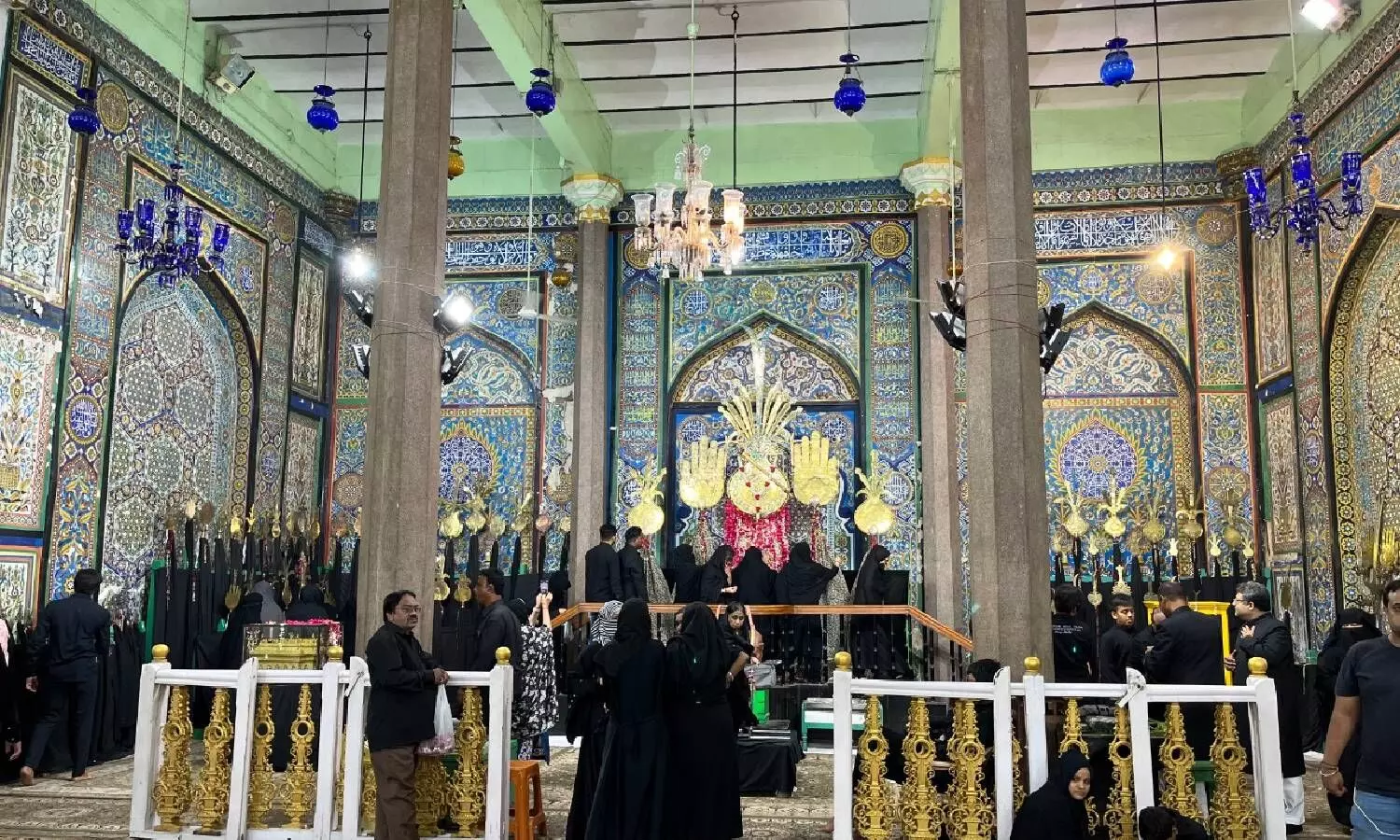Muharram Tabarruk: After Iran, Hyderabad tops in alms sharing tradition
The Martyrdom of Iman-e-Hussain is mourned and commemorated the World over. However, Hyderabad does it distinctively because the Qutub Shahi's ruled the Deccan for 175 years.
By Syed Ghiyas Uddin
Muharram is the first month of the Islamic calendar. The 10th day of the month is called 'Youm-e-Ashura'. The Ark of Noah settled on the land, and the Musa along with Israelites cross the river Nile are few to name the events that happened on this day of Ashura as per Semitic civilizations. The significant event of all is the Martyrdom of Iman-e-Hussain along with his 72 extended family members.
The Martyrdom of Iman-e-Hussain is mourned and commemorated the World over. However, Hyderabad does it distinctively because the Qutub Shahi's ruled the Deccan for 175 years. Their impact on this land-lock region is still reflected in the cuisine, language, and particularly in the affairs of Ashura, simply referred to in Hyderabad as Muharram.
Being a Shia dynasty, the Qutub Shahi's exchanged diplomatic affairs and shared the culture with the Safavid's of Iran. The miles of distance between these two dynasties were engulfed by the commemoration of Iman-e-Hussain.
Outside Iran, it is in Hyderabad where there is the maximum number of Tabaruk (Totem) associated with 'Ahle-e-Bait' (House of Prophet) says Syed Faizan Medhi of Hussaini Munch, a bunch of Shia Youth that volunteers the devotees in Bibi-Ka-Alam (dt.1784) for the first 10 days of Muharram.
He further says that Bibi-ka-Alam is auspicious not because of the diamonds that hang around it however a piece coffin (Tabaruk ) of Bibi Fatima-us-Zehra (beloved daughter of Prophet Muhammed and mother of Iman-e –Hussain) is attached to the Alam (emblem) makes us venerate it and we named it Bibi ka Alam. It is this Alam that is placed on the Elephant in the Procession of Youm-e-Ashura from Dabeerpura via Charminar to Charghat.
Next is 'Alawa-e-Sartoqh' at Dar-us-Shifa associated with the Fourth Iman Hazarth Zain-ul-Abedeen. He was the only male that survived the massacre of Ashura due to his ill health. Faizan says 'Sartoqh' in Persian it means the neck cuff. The Alam has a piece of neck cuff that was tied to the fourth Iman before he was taken dungeon.
Further the oldest & distinctive of all is the 'Badashahi Ashurakhan' opposite to Madina Building associated with the Hazarath-e-Abbas the stepbrother of Imam-e- Hussain. Oldest, because it survived the siege of Golconda and its distinctiveness of it lies in its blue tile work. A popular Safavid-Iranian art form and it resembles the structures at Isfahan (the city in present-day Iran and once the capital of the Safavid Dynasty). Even, the Iman Ali Shrine ( Mosque) at Mazar-e-Sharif Afghanistan has similar blue-tile work on it.
On way from Badashahi Ashoorakhana towards Charminar at Pathergatti is Alawa of Naal-e -Mubarak associated with the horseshoe of 'Zuljana' name of the horse of Imam-e- Hussain. The Alam is designed as Horseshoe. It is said that is a relic received by the Qutub Shahi's from Iran.
On the left of Gulzar-Houze is Panj-e-shah road named after Bargha-e-Panj-e-shah a relic with an impression of the Palm of Ali the Fourth Caliph and First Imam. And Opposite it is Bargha-e-Khadam-e-Rasool.
Most of the Ashoorkhana alias Alawa were rebuilt & re-decorated by the Asif Jahi. The most magnificent of them is 'Aza-Khana-Zehra' on the banks of river Musi. Build by Mir Osman Ali Khan the last Asif Jahi ruler, the word 'Aza' derives from 'Azadari' which means commemoration of death.
Being a Sunni Monarch surrounded by the Shia jagirdars & mansadar the Asif Jahi's harmonies the two sects of the same religion via different harmonies policies. One such is by appointing the caretaker (Mutawaali) of most of the Alawa as Sunni and the Alamadar (raises-up the Alam) as the Shia. To this date, this edict of Asif Jahi's is observed as one of the essential rituals of Muharram in Hyderabad. Commemoration of the Martyrdom of Iman-e Hussain is not limited to the Muslims. As Faizan says, the Hussaini-Brahmin performs Majlis (assembly) that mourning on the Martyrdom of Iman-e-Hussain on the 7th of Muharram in Bibi-Ka-Alawa and considers it essential to their being. So, the Ashura is remembered as Peer-la-Punduga (festival of saints) in the countryside of Deccan with the taste & tenor of Telugu culture.
Of all, the Martyrdom of Iman-e-Hussain has a message that transcendent the abstract identities of time, region, religion, and language. 'Virtue is Martyrdom; vice is submission before the Tyrant'.